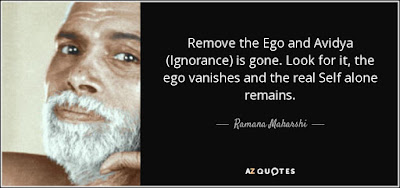Anna means food, maya means appearance (usually illusory). All of the physical aspects of life come and go, and are consumed by another aspect of external reality. Thus, the outermost of the koshas is called the sheath of food, or Annamaya kosha. It lives by food and dies without it.
The Annamaya kosha is our physical body; our muscles and our bones, our ligaments and our tendons. This is the kosha most people are concerned about when they begin a yoga practice. They want increased flexibility, they want to tone up their muscles, they want to learn to relax their bodies, and they’re looking to gain strength, improve their balance and find stress relief.
In Vedanta practice, we train this aspect of ourselves, take care of it, and nurture it, so that we can both enjoy our external lives and go inward without it being an obstacle during meditation time. In meditation, we become aware of Annamaya kosha, explore it, and then go inward, to and through this and the other koshas.

The Annamaya Kosha forms the gross body. The primary way to impact this kosha is through asana. It is affected by the 5 kleshas as follows:
- Avidya (Ignorance): The Annamaya kosha or gross body is mistakenly seen as the self which colors the Atman (the true Self) and in so doing hides or covers it. This ignorance must be removed before the yogi can proceed to discover their real nature and purpose.
- Asmita (Ego): This thought form identifies with the gross physical body as the animator of that body, pervading the entire body-mind complex and reinforcing it by becoming attached to it. Recognizing the illusive nature of this klesha causes it to evaporate.
- Raga (Attachment): This klesha is supported by our desire nature. All of us have experienced this attachment to the body pleasures, the patterns of acquisition that often follow and how easily this can lead to suffering.
- Dvesha (Aversion): This klesha alludes to a physical identification with what we don’t like. Aversions emerge from previous bodily experiences of pain and suffering. It is the hate or fear which follows the experience of physical anguish or extreme discomfort and can lead to a host psychological afflictions.
- Abhinivesha (Clinging to Life): This klesha can only increase our identification with our physical/bodily existence, resulting in a fear of bodily death which makes it even harder for us rise above, perceive or identify with our spiritual nature.
As these kleshas are recognized and dissolved (or cleared) from the Annamaya Kosha, the first step is taken. As the other koshas are cleansed of these afflictions, the Atman (or Self), which is indescribable, is gradually recognized and eventually realized by direct experience; this is the goal of Yoga meditation, Advaita Vedanta, and certain Tantra practices.
Stay tuned, next: Further exploration of each Klesha and how it colors the Pranamaya kosha.
Rae Indigo is ERYT 500
